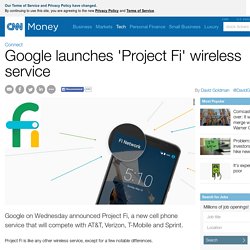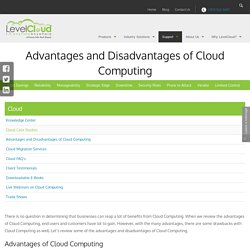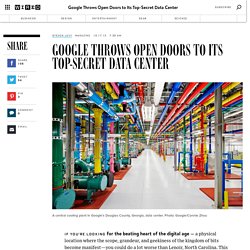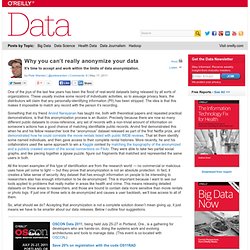

Google launches 'Project Fi' wireless service - Apr. 22, 2015. Project Fi is like any other wireless service, except for a few notable differences. 1.

It works across multiple networks. Google partnered with Sprint (S) and T-Mobile (TMUS) and will tap into more than a million free Wi-Fi hotspots across the world. Project Fi will piggyback on those networks, seamlessly switching between them to choose the network with the fastest and most reliable service in your area. No matter what network you're on -- or if you're connecting via Wi-Fi, Google will let you make calls, stream media, browse the Web and use apps. And when you're on an open, public Wi-Fi network, Google will automatically encrypt your data to protect it from hackers. 2.
If you use less data, you'll get a credit back on your bill. So if you have a 3 GB plan and only use 2.2 GB, you'll get an $8 credit on your bill. 3. If you don't have a Nexus 6, you'll have to buy one for $649 up front or $27 a month over two years. After drones, Google and Facebook eye satellites to expand internet access. Advantages and Disadvantages of Cloud Computing. There is no question in determining that businesses can reap a lot of benefits from Cloud Computing.

When we review the advantages of Cloud Computing, end users and customers have lot to gain. However, with the many advantages, there are some drawbacks with Cloud Computing as well. The Beginner's Guide to the Cloud. "The cloud" is one of those trendy tech terms a lot of people use but can't clearly define.

What is the cloud? When do you encounter it? How can it benefit your business? If you use any kind of social media or online data drive, you're already using the cloud; you just may not realize it. In this beginner's guide, we break down the who, what, where and why of one of tech's most abstract terms. What is the cloud exactly? The first thing you should understand about the cloud is that it is not a physical thing. For example, Adobe recently moved its creative services to the cloud. Other servers in the network are responsible for storing data. For example, when you take a picture on your smartphone, it is stored on your phone's internal memory drive.
IMAGE: Flickr, Acoustic Dimensions So remember: "The Cloud" is a network of servers. Chances are, you encounter the cloud daily. What are the benefits to working in the cloud? A brief history of the cloud. Google Throws Open Doors to Its Top-Secret Data Center. If you’re looking for the beating heart of the digital age — a physical location where the scope, grandeur, and geekiness of the kingdom of bits become manifest—you could do a lot worse than Lenoir, North Carolina.

This rural city of 18,000 was once rife with furniture factories. Now it’s the home of a Google data center. Engineering prowess famously catapulted the 14-year-old search giant into its place as one of the world’s most successful, influential, and frighteningly powerful companies. Its constantly refined search algorithm changed the way we all access and even think about information. Its equally complex ad-auction platform is a perpetual money-minting machine. This is what makes Google Google: its physical network, its thousands of fiber miles, and those many thousands of servers that, in aggregate, add up to the mother of all clouds. Click to Open Overlay Gallery Urs Hölzle had never stepped into a data center before he was hired by Sergey Brin and Larry Page. Why you can't really anonymize your data - Data. One of the joys of the last few years has been the flood of real-world datasets being released by all sorts of organizations.

These usually involve some record of individuals’ activities, so to assuage privacy fears, the distributors will claim that any personally-identifying information (PII) has been stripped. The idea is that this makes it impossible to match any record with the person it’s recording. Something that my friend Arvind Narayanan has taught me, both with theoretical papers and repeated practical demonstrations, is that this anonymization process is an illusion. Precisely because there are now so many different public datasets to cross-reference, any set of records with a non-trivial amount of information on someone’s actions has a good chance of matching identifiable public records. So, what should we do? Keep the anonymization Just because it’s not totally reliable, don’t stop stripping out PII. Acknowledge there’s a risk of de-anonymization Limit the detail Related: FINAL 2014 SBA Disaster Preparedness Plan.
Multitenancy - Gartner IT Glossary. Multi-tenancy in the cloud: Why it matters. Whether an IT organization is going with public or private clouds, it's important to understand the nuances of multi-tenant architecture.

For public clouds, IT managers need to understand the degree of multi-tenancy supported by whichever vendor they are looking at. For private clouds, the entire responsibility of designing a multi-tenant architecture rests with the IT managers. Enterprise cloud adoption has gone beyond the levels of intellectual pursuits and casual experimentation. An analysis by IDC shows that $17 billion of the $359 billion of worldwide IT spending for 2009 could be attributed to cloud computing. Wireshark Lab. Michael Llanes.